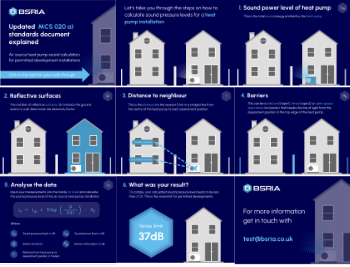CityTrees
In March 2018 a 'CityTree' was installed on London's Glasshouse Street, near Piccadilly Circus to highlight the risks of air pollution. This coincided with the publication of a joint report by four Parliamentary select committees which concluded that UK air pollution causes 40,000 deaths and costs the economy £20 billion a year.
Green City Solutions, Proambiente and the Italian city of Modena joined forces in Spring 2017 to initiate the ‘CityTree Scaler’; a project supported by Climate-KIC Germany (the biggest EU innovation initiative for climate-friendly technologies). The consortium was formed to prove the effectiveness of a new smart biotechnological filter for tackling urban air pollution.
The consortium have also installed six CityTrees on the most polluted street in Modena.
Developed by German start-up, Green City Solutions, CityTrees combine cutting-edge internet of things (IoT) technology with moss cultures and plants that ‘eat’ air pollution. They claim that a CityTree has the same environmental impact as 275 urban trees but requires only 3 sq. m of space.
The sculptural structures contain plants capable of removing dust, nitrogen dioxide and ozone from the air. The units are also remarkably self-sufficient. IoT sensors measure environmental data, and solar panel technology and a rainwater collecting system, mean that the nutrition, water and minerals required by the plants can be regulated automatically, requiring only a few hours maintenance a year.
WiFi, iBeacon, NFC and digital screens also allow CityTrees to transmit digital and visual information, and companies can pay to advertise on them by adding lighting, logos or LED panels.
The technology behind the CityTree is a result of more than a decade’s research at the Dresden University of Technology, Lancaster University and University of Bonn. It is hoped that the project will prove CityTrees offset 240 tonnes of CO2 equivalents a year.
Victor Splittgerber, CTO and co-founder of Green City Solutions, said: “The project will help us to obtain important insights of the effectiveness of our smart plant filters. The results will help us to prove the estimated results of the laboratory tests. We see the CityTree as an essential part of future environmental urban planning. Therefore the next logical step is the testing over a longer period under real urban conditions."
For more information, see Green City Solutions.
Content and images courtesy of Green City Solutions.
[edit] Related articles on Designing Buildings Wiki
Featured articles and news
Amendment to the GB Energy Bill welcomed by ECA
Move prevents nationally-owned energy company from investing in solar panels produced by modern slavery.
Gregor Harvie argues that AI is state-sanctioned theft of IP.
Heat pumps, vehicle chargers and heating appliances must be sold with smart functionality.
Experimental AI housing target help for councils
Experimental AI could help councils meet housing targets by digitising records.
New-style degrees set for reformed ARB accreditation
Following the ARB Tomorrow's Architects competency outcomes for Architects.
BSRIA Occupant Wellbeing survey BOW
Occupant satisfaction and wellbeing tool inc. physical environment, indoor facilities, functionality and accessibility.
Preserving, waterproofing and decorating buildings.
Many resources for visitors aswell as new features for members.
Using technology to empower communities
The Community data platform; capturing the DNA of a place and fostering participation, for better design.
Heat pump and wind turbine sound calculations for PDRs
MCS publish updated sound calculation standards for permitted development installations.
Homes England creates largest housing-led site in the North
Successful, 34 hectare land acquisition with the residential allocation now completed.
Scottish apprenticeship training proposals
General support although better accountability and transparency is sought.
The history of building regulations
A story of belated action in response to crisis.
Moisture, fire safety and emerging trends in living walls
How wet is your wall?
Current policy explained and newly published consultation by the UK and Welsh Governments.
British architecture 1919–39. Book review.
Conservation of listed prefabs in Moseley.
Energy industry calls for urgent reform.



























